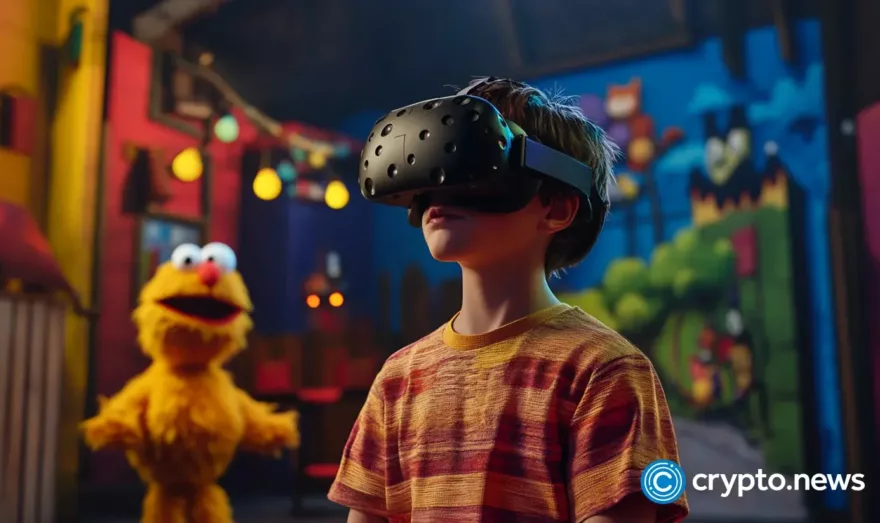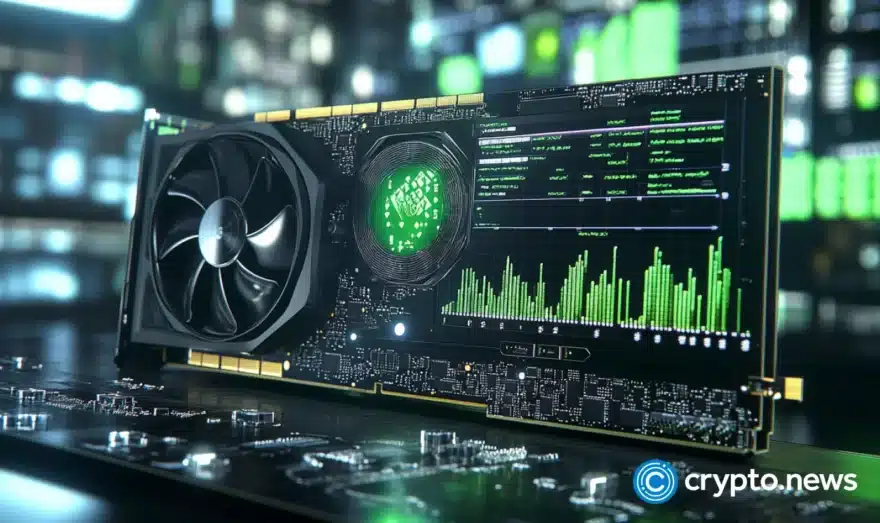Ten things you can already do in the metaverse
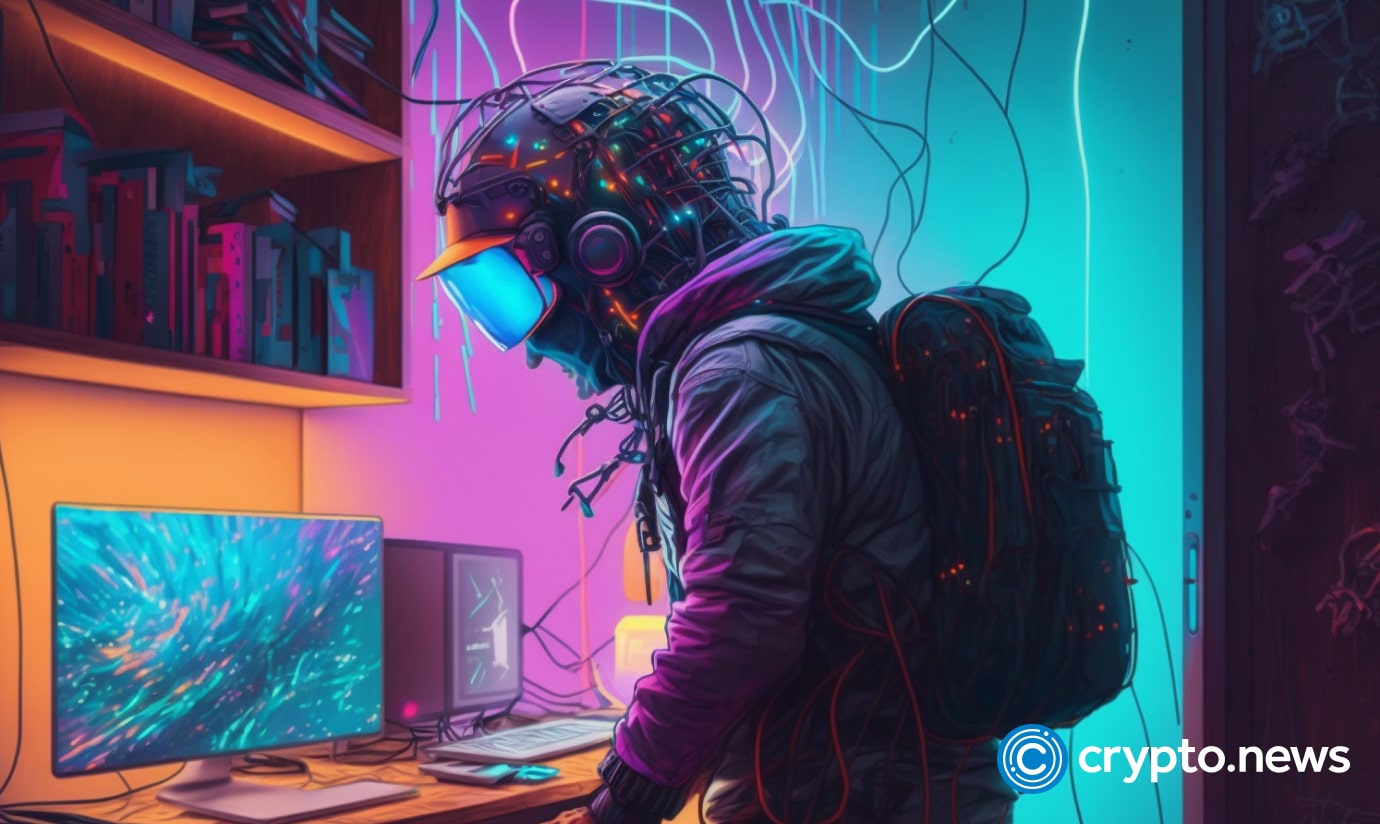
The metaverse is in its infancy. It could be many years before the world sees its full potential. However, that doesn’t mean it’s entirely out of reach. Read on to learn what you can already do in the metaverse today.
Table of Contents
What is the metaverse
The metaverse is a 3D immersive virtual world where people can interact with each other and build in-world experiences, places, landscapes, and objects. These virtual worlds may have their own economies and currencies, allowing people to buy and sell items, just like in the real world.
Metaverses imitate the real world, enabling people to work, socialize, play, and shop. They also offer users a feeling of being present in that virtual world and like other people are there with them.
Interestingly, the metaverse is not a new concept. In a 1992 novel titled Snow Crash, Neal Stephenson coined the word metaverse to describe a virtual reality world with an economy that enables people to buy and sell real estate while inhabiting 3D avatars. Moreover, massively multiplayer online (MMO) games have featured metaverse-like environments for years.
With the emergence of blockchain technology and cryptocurrencies, companies are building metaverses that incorporate the two, completely changing the metaverse experience. Crypto assets are helping people acquire complete ownership of their virtual assets. For instance, non-fungible tokens (NFTs) can represent ownership in virtual real estate. This ownership is recorded on the blockchain, and holders can swap the tokens for major cryptocurrencies like ETH on decentralized exchanges (DEXs).
Why are people (and Investors) excited about the metaverse
Let’s take a look at why people are excited about the metaverse.
Big companies are investing in the metaverse
Venture Capitalist Matthew Ball describes the metaverse as “a quasi-successor state to the mobile internet.” This means it will advance and alter the role of the internet, smartphones, and computers in our lives. So, it does appear that the metaverse is the next phase in technology, and companies like Facebook — now called Meta — are putting their money and time into it.
Other companies that are investing in the metaverse are Microsoft, Epic Games, Google, Roblox, Shopify, and Nvidia. An investment in the metaverse now, when it’s still in the very early stages, could give these companies a competitive advantage in the metaverse-based future.
Crypto metaverse projects are recording high NFT sales volumes
According to data from NonFungible, crypto metaverse projects are raking in NFT sales in the hundreds of thousands of dollars. Sometimes, sales can even hit millions of dollars. For example, metaverse sales on August 19, 2022, amounted to $1.8 million.
Investor speculation is driving the demand for metaverse NFTs, especially those representing the virtual real estate. A metaverse plot of land that sold for $5 million on TCG World is reportedly the most expensive real estate in metaverse history. The metaverses that are recording the highest volumes in virtual land sales are Otherside and Decentraland.
Celebrities are in the metaverse
Several celebrities own a piece of the metaverse, indicating how much of a big deal these virtual worlds have become. Snoop Dogg has his own universe called Snoopverse on the Sandbox metaverse. Paris Hilton, model Sara Sampaio, and tennis star Stanislas Wawrinka also own virtual land within metaverses.
What can you do in the metaverse
Invest in Virtual Real Estate
First things first – you’ll need to get yourself some cryptocurrency. Many metaverse platforms that operate on blockchain technology require you to purchase and trade digital assets using cryptocurrencies such as bitcoin (BTC) or ethereum (ETH).
Once you’ve got some crypto in your wallet, you can start investing in virtual real estate.
One popular metaverse platform for virtual real estate investment is Decentraland. You can buy virtual land using MANA tokens, the platform’s native cryptocurrency.
The virtual land is divided into parcels, each with unique coordinates and features. Investors can buy multiple parcels and develop them into anything from virtual storefronts to sprawling virtual mansions.
Another platform to consider is Somnium Space, which allows you to buy and sell virtual properties using their native currency, CUBE.
You can purchase anything from small apartments to entire skyscrapers and customize their properties to their heart’s content.
But it’s not just about buying and selling virtual real estate. There are also opportunities to profit from the use of your properties.
For example, you could rent your space to other users for a fee. Some platforms even offer revenue-sharing programs, allowing you to earn a percentage of profits generated by their virtual properties.
Look for reputable platforms with a strong track record and active communities. Make sure that you consider factors like user adoption, platform features, and ease of use when making your investment decisions.
Create and play games
To create games in the metaverse, you’ll need a solid understanding of 3D modeling, game design, and coding.
Many different tools and platforms are available for this, including Unity, Unreal Engine, and Roblox Studio. Each has its strengths and weaknesses, so be sure to research before choosing one.
Once you’ve created your game, it’s time to publish it to the metaverse. This can be done through a variety of platforms, such as CryptoVoxels. These platforms allow you to showcase your game to a wide audience and earn cryptocurrency rewards.
You’ll need a compatible VR headset and a good internet connection to play games in the metaverse.
Many different types of games are available, from simple puzzle games to massive multiplayer experiences.
Some popular games in the metaverse include Horizon Worlds, Fortnite, Roblox, etc. One of the biggest advantages of gaming in the metaverse is the ability to earn rewards.
Many games offer in-game items that can be bought and sold on blockchain-based marketplaces, allowing players to earn real money. Additionally, some games offer cryptocurrency rewards for completing certain tasks or challenges.
Host virtual events
Hosting virtual events in the metaverse is a great way to unite people worldwide.
You’ll need to choose a virtual world that suits your needs to get started. For example, The Sandbox is a popular choice for blockchain events because of its user-friendly interface.

Once you’ve chosen your virtual world, you must set up your event space. This can be as simple as creating a virtual room or as complex as building an entire virtual world.
Next, you’ll need to promote your event. Social media is a great way to reach potential attendees. Still, you can also use crypto-specific channels like Telegram and Discord to get the word out.
Remember to include information about the event, such as the date, time, and any special guests or speakers.
On the event day, ensure everything is set up and running smoothly. You should have moderators to help manage the event and keep things on track.
During the event, encourage attendees to interact with each other and participate in any activities or discussions.
Finally, make sure to follow up with attendees after the event. This can be as simple as sending a thank you email or as complex as offering incentives for attending, such as exclusive access to future events or discounts on crypto-related products and services.
Create your own virtual avatar
Creating your own virtual avatar in the metaverse can be a fun and engaging way to connect with others in the digital realm.
You’ll need to choose a platform that supports avatar creation and customization, such as VRChat or Second Life. One can be done on Meta (Facebook) or Instagram, as well.

Once you’ve chosen your platform, you can begin creating your avatar. This typically involves selecting a base model and customizing it with different hairstyles, clothing, accessories, and other features to make it unique.
Many platforms also offer the ability to add animations and gestures to your avatar, enhancing its expressiveness and making it feel more alive. For example, you could add a wave or a thumbs-up gesture to your avatar to interact with others more naturally and intuitively.
Consider adding custom textures or 3D models to make your avatar stand out. This can be done using software such as Blender or Maya, allowing you to create truly one-of-a-kind avatars that reflect your personal style and creativity.
As the metaverse grows and evolves, creating and customizing your virtual avatar will become an increasingly important part of digital identity and social interaction.
Meet new people
Have you ever thought of meeting new people in a completely virtual world? With the rise of the metaverse, this is now possible.
Once you choose a platform, create an avatar representing you in the metaverse. Next, explore the virtual world and attend events. The metaverse is full of events, such as concerts, art exhibitions, and game tournaments.
Attending these events is a great way to meet like-minded people. You can also join communities and groups that share your interests.
Finally, feel free to strike up a conversation. The metaverse is a social space, and people are usually open to meeting new friends. You can use voice chat or text chat to communicate with others. Be respectful and friendly, and you might make some lifelong connections.
The metaverse permits people to meet and talk to each other. For instance, Decentraland has a voice chat feature that enables users to communicate with each other.
Hang out with friends
The metaverse is an exciting new digital world where you can hang out with your friends in a virtual environment.
With the help of avatars, you can explore and interact with the virtual space, engage in social activities, play games, attend events, and much more. The possibilities are endless, and you can create your own unique experiences with your friends.
Some popular virtual worlds include Second Life, VRChat and Rec Room. These platforms offer various activities, such as exploring virtual cities, attending concerts and events, and playing games like laser tag and paintball.

In summary, the metaverse provides a unique opportunity to hang out with friends in a virtual world that is limited only to your imagination. With so many different platforms and activities available, there is something for everyone to enjoy.
Go on a virtual shopping spree
The metaverse is a place to socialize and have fun and a marketplace where you can buy and sell virtual goods.
With the rise of non-fungible tokens (NFTs) and cryptocurrency, virtual items have become a hot commodity. As a result, there are countless opportunities for shopping and collecting in the metaverse.
One popular way to go on a virtual shopping spree is through virtual marketplaces such as OpenSea, Nifty Gateway, and SuperRare.
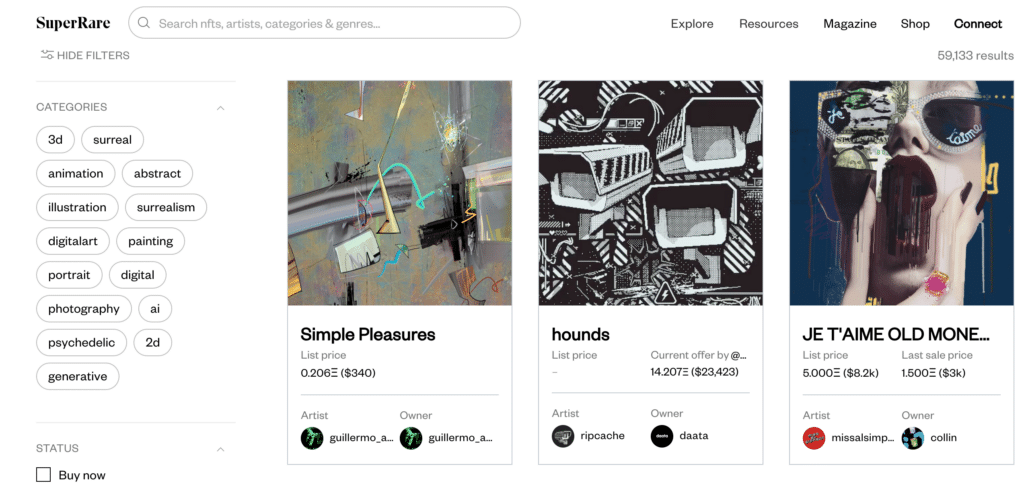
These marketplaces allow you to browse and purchase unique and rare digital items like art, collectibles, and even virtual real estate. Many of these items are one-of-a-kind, making them highly sought after by collectors and enthusiasts.
Another way to shop in the metaverse is through virtual reality storefronts. Many companies are creating virtual storefronts, allowing users to browse and purchase products in a 3D environment.
For example, luxury fashion brand Gucci recently acquired a virtual land in Sandbox, allowing users to purchase digital versions of their products to use in the game.
In summary, the metaverse provides a unique and exciting shopping method with numerous virtual marketplaces and storefronts. So whether you’re a collector, enthusiast, or just looking for something fun and unique, the metaverse has something for everyone.
Sell virtual goods
One of the most popular things in the metaverse is selling virtual goods. Selling virtual goods can be profitable for anyone with a talent for creating digital content.
A skilled 3D artist can create virtual clothing, furniture, and other objects that can be sold to other players. For instance, in HighRise, you can create and sell fashion items for avatars.
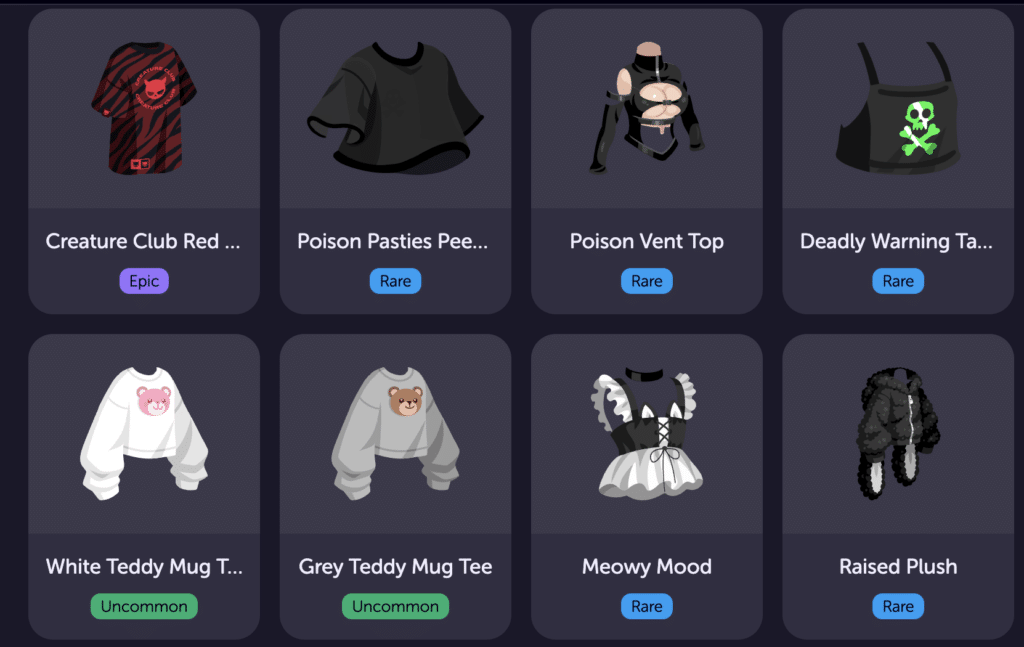
Likewise, a game designer can create weapons and other items that can be used in their game.
One of the advantages of selling virtual goods is that there is no need for physical inventory or shipping. Instead, the goods can be delivered instantly to the buyer, and you can receive payment in cryptocurrency. This makes setting up an online store and selling virtual goods easy.
Another advantage of selling virtual goods is that there is a large market for them. The metaverse is growing rapidly, and more and more people are spending time in digital worlds. This means that there is a constant demand for new virtual goods.
Get a job and work
As the metaverse continues to grow, there are more and more opportunities for people to find work within this digital world.
From game developers and virtual architects to virtual event planners and social media managers, a wide range of jobs are available in the metaverse.

Game development is one of the most popular job opportunities, as there is a constant demand for new and innovative virtual games. This includes everything from designing characters and environments to coding and programming the game mechanics.
Another growing field is virtual architecture, where designers create virtual buildings and environments for games, virtual events, and other metaverse experiences. This includes everything from designing the layout of a virtual city to creating a virtual home.
Virtual event planning is becoming increasingly popular as companies and individuals seek ways to host virtual events within the metaverse. This includes everything from virtual conferences and trade shows to virtual concerts and festivals.
Overall, there are endless job opportunities for those with the right skills and expertise in the metaverse.
Collaborate with your colleagues
Companies are setting up virtual offices in the metaverse, permitting colleagues to collaborate remotely on tasks.
FAQs
Does metaverse mean video game?
No. Video games are merely some of the virtual experiences in the metaverse. However, they are not the metaverse.
How can I access the metaverse?
People can experience the metaverse through a smartphone, a computer, or a virtual reality (VR) headset. To access a blockchain-powered metaverse like Decentraland or Sandbox, you need to access the platforms and then connect your crypto wallet to log on.
Is a VR headset absolutely necessary to experience the metaverse?
No. Users don’t need a VR headset to use Sandbox, Decentraland, and other metaverses that haven’t implemented virtual reality.
Is the metaverse safe?
Users’ safety might depend on the platform, the data they require users to provide, and the information they collect. Facebook’s entry into the metaverse, for example, has raised privacy concerns because of previous data breaches. Blockchain metaverses, on the other hand, could provide some level of anonymity. Nevertheless, they may still collect information such as device type, operating system, and wallet address.
What’s the future of the metaverse?
According to Matthew Ball, the metaverse will develop beyond video games in the future. He writes: “The Metaverse will significantly broaden the number of virtual experiences used in everyday life (i.e., well beyond video games, which have existed for decades) and, in turn, expand the number of people who participate in them.”













